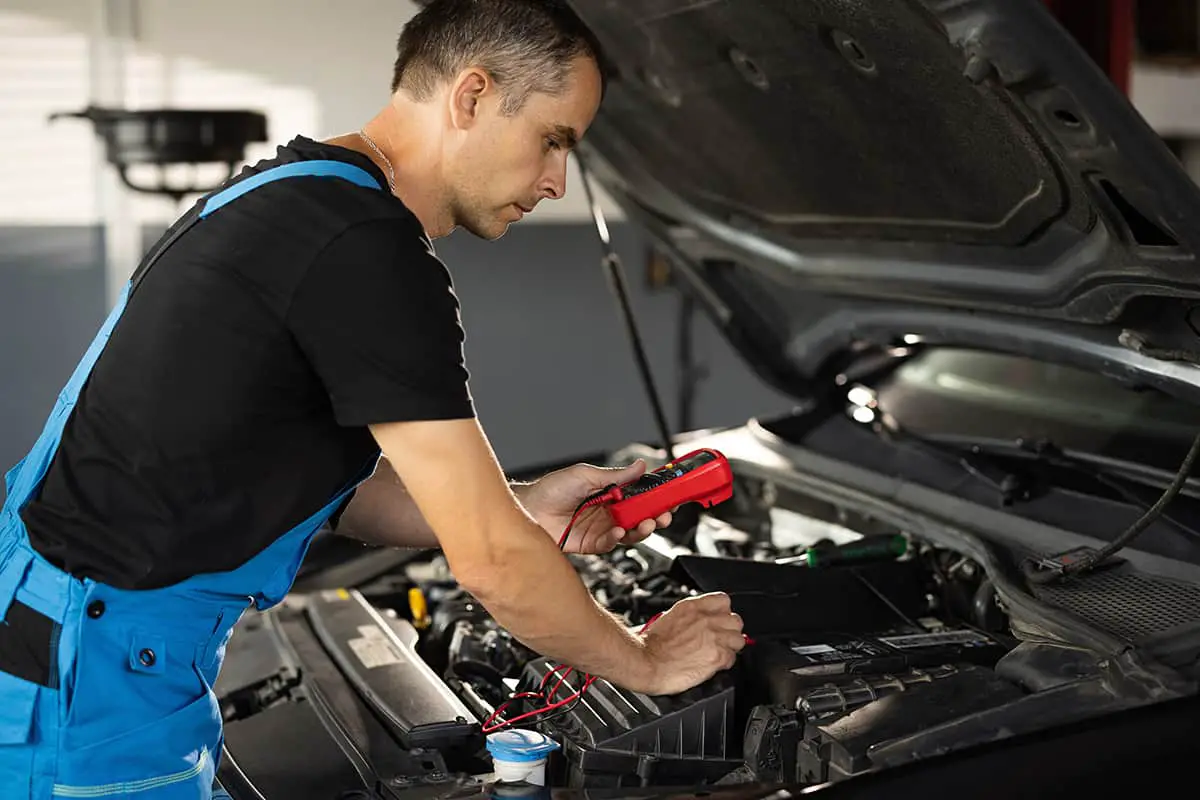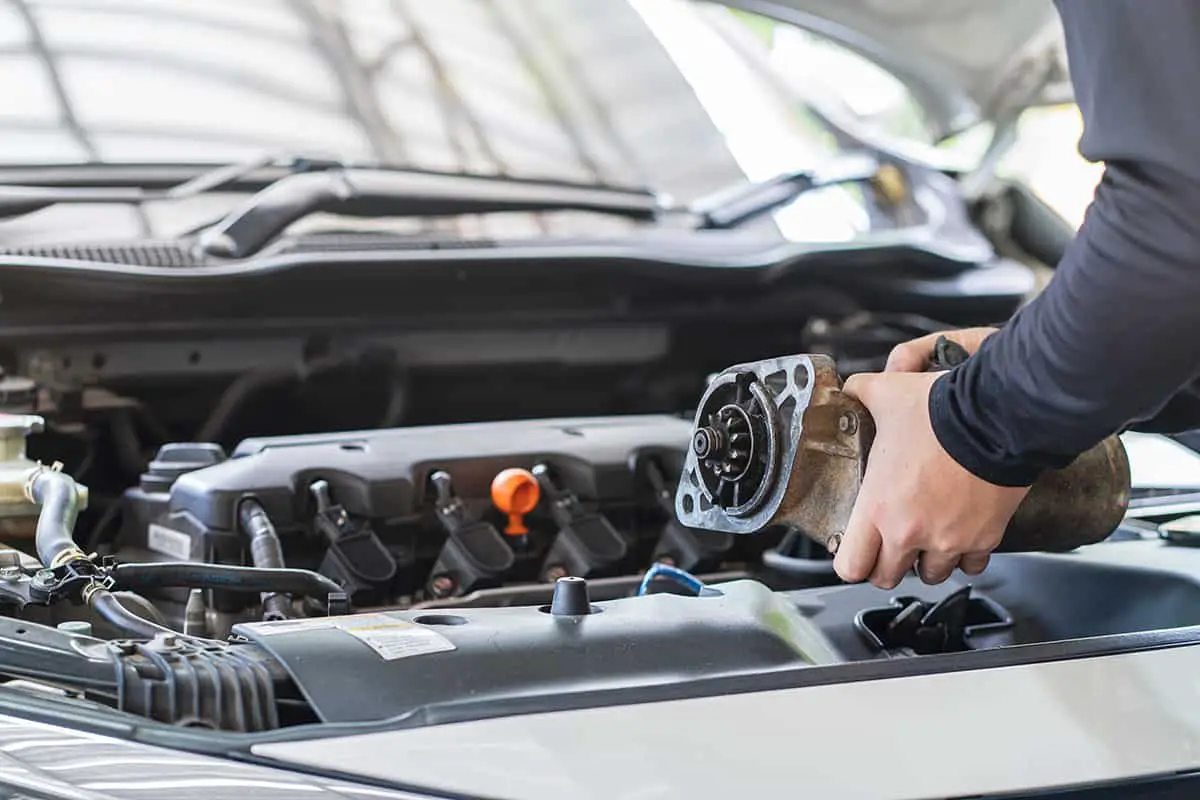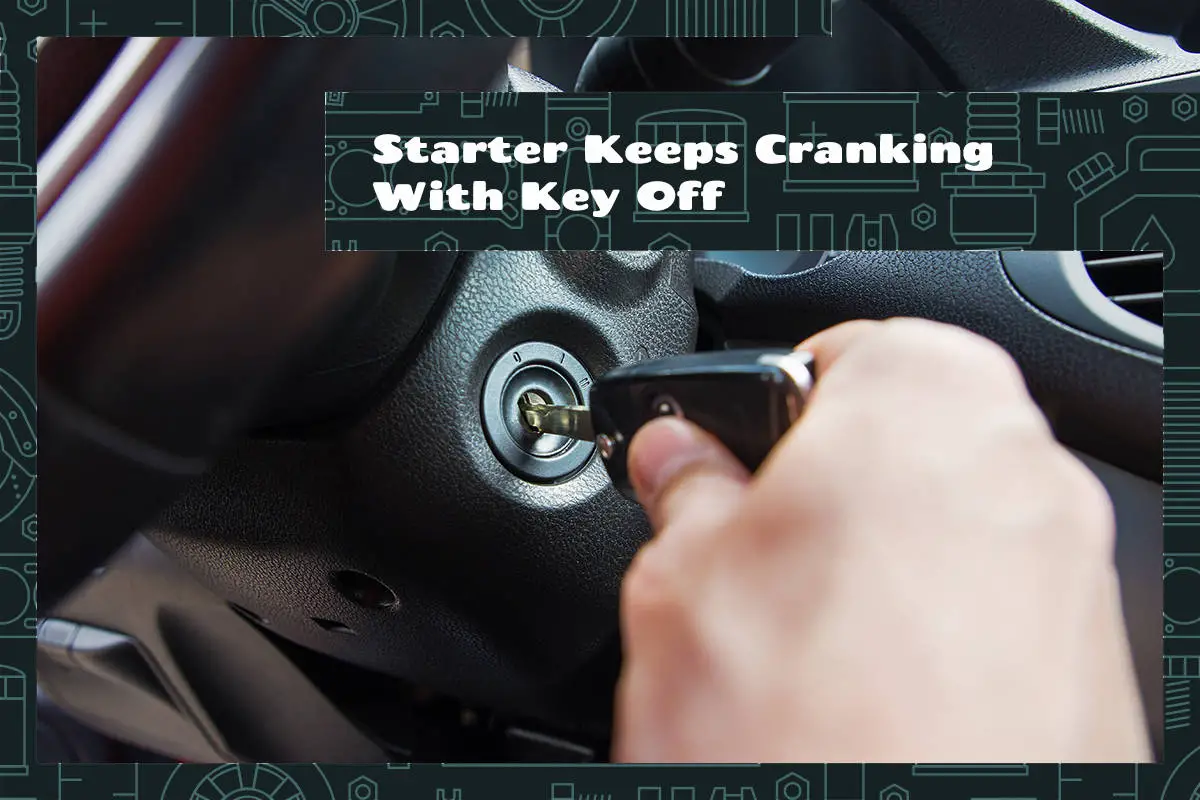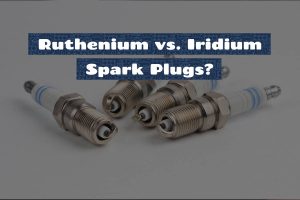Every car owner knows the unmistakable sound of a vehicle starting up—the engine revving after the turn of a key or push of a button. This action is due to the starter, which initiates the engine’s operation. But what if the starter doesn’t behave as expected?
If the starter stays engaged even when the keys are off, it may be due to one or more of the following causes:
- Faulty Ignition Switch
- Starter Solenoid Problems
- Worn Out Pinion Gear or Flywheel
- Wiring Issues
- Faulty Starter Relay
This article goes into greater detail about these causes and the solutions you can implement to avoid this issue in the future.
What Does “Starter Stays Engaged” Mean?

In the automotive world, the term “starter stays engaged” paints a picture of a starter that’s overstaying its welcome. This means even after the engine is running or the key is in the “off” position, the starter remains active.
The starter is the hero behind the curtains in the car’s ignition process. This electric motor’s primary purpose is to crank the engine, setting off a series of events that ultimately result in your engine running. The starter takes power from the battery and uses it to turn the engine over. Once the engine is running on its own, the starter’s job is done, and it should disengage.
However, when we say the “starter stays engaged”, we’re indicating that this component doesn’t retreat after its job is done. It’s similar to a drill continuously running even after you’ve driven in the creating a hole. This unnecessarily prolonged operation can cause unnecessary damage and wear and tear.
Common Symptoms
When the starter stays engaged, certain symptoms surface that are hard to ignore.
1. Audible Whirring or Grinding Noise
You might hear a persistent whirring or grinding noise even after you’ve released the ignition key and the engine is running. This sound is the result of the starter motor’s pinion gear continuously spinning and interacting with the flywheel, a metal disc connected to the engine’s crankshaft. This can cause significant wear and damage to both components.
2. Rapid Battery Drainage
Under normal circumstances, the starter’s engagement is brief, consuming power for only a short time. However, when the starter stays engaged, it continues to draw significant energy. This can rapidly drain the battery. If you find yourself frequently requiring jump starts or noticing that your battery depletes faster than usual, an engaged starter could be an indirect culprit.
3. Overheating of the Starter Motor
If you touch the starter motor after driving (caution: it can be very hot), and it feels warmer than usual, it’s a symptom worth noting. Overheating can lead to internal damage to the starter motor and even affect nearby components.
4. Burning Smell or Smoke
When subjected to prolonged activity or short-circuiting, electric components often produce a burning smell or even smoke. If engaged continuously, the starter motor can overheat, causing the insulation around its wiring to melt. This damages the starter and poses a risk of electrical fires.
5. Difficulty in Starting the Vehicle
While this symptom might seem counterintuitive, a starter that remains engaged can have trouble initiating the engine. This arises because the constant engagement wears down the starter motor, reducing its efficiency. Also, if the pinion gear or flywheel becomes damaged due to continuous engagement, the starter might struggle to turn the engine over.
Top Causes of Starter Staying Engaged (and Fixes)

Your starter remaining engaged is a cry for attention. You should address the problem as quickly as you can, but first, you need to pinpoint the exact cause behind the unusual starter behavior.
1. Faulty Ignition Switch
The ignition switch governs the power distribution in your vehicle. A malfunctioning switch might not halt the power supply to the starter after the engine has been ignited, resulting in the starter staying engaged.
Fix:
Test the ignition switch for continuity using a multimeter. If found faulty, replace it. Follow the video guide provided by Scotty Kilmer for details.
2. Defective Starter Solenoid
The solenoid acts as a bridge between the battery and the starter motor. When working correctly, it swiftly connects and disconnects the power flow. However, a defective solenoid can stick in the ‘on’ position, forcing the starter to remain engaged.
Fix:
Check the starter solenoid by using a multimeter for continuity. A persistently faulty solenoid should be replaced. ExpertVillage Leaf Group on YouTube can help you with this problem.
3. Damaged Pinion Gear or Flywheel
The pinion gear, driven by the starter motor, meshes with the flywheel to crank the engine. Continuous engagement can wear down these components, making them stick together.
Fix:
Inspect both the pinion gear and flywheel for wear or damage. If there’s significant wear, replacement is usually the best solution.
4. Wiring Issues
Faulty wiring or bad connections can sometimes send continuous power to the starter, even when it’s not required. Corroded, frayed, or loose wires can all be culprits.
Fix:
Conduct a thorough inspection of the wiring connected to the starter. Replace any damaged wires and ensure all connections are secure.
5. Malfunctioning Starter Relay
The starter relay is a switch that sends power to the starter and solenoid. A malfunctioning relay can send constant power, leading to a perpetually engaged starter.
Fix:
Test the starter relay with a multimeter. If it’s not functioning correctly, a replacement is advised. CarsNToys can show you how to test and replace a starter relay.
6. Misalignment of Starter Components
In extreme cases, improper installation or unordinary wear can cause the starter system’s components to become misaligned. Tiny errors in placement may cause the car’s starter to behave erratically, including remaining engaged with the key off.
Fix:
Check the alignment of the starter and its components. If misaligned, realign them. Due to the complexity of this job, you might want to hand it over to the pros.
FAQs
1. How much does it cost to replace a starter?
It’s hard to get an estimate of how much you would end up spending on fixing your car’s starter since it ultimately depends on what the underlying problem is. Replacing components may be costlier than fixing certain wiring issues, for example.
That said, the average cost to fix a starter is between $100 and $400, not including parts and labor. You should expect to pay more for luxurious cars due to the cost of parts and expertise needed to handle delicate jobs.
2. How long does a car starter typically last?
Typically, a starter can last anywhere from 30,000 to 200,000 miles or the entirety of the car’s estimated lifespan. That’s a broad range, and the lifespan of a starter largely depends on various factors:
- Usage: The more frequently you start your car, especially in short intervals, the quicker the starter might wear out.
- Maintenance: Regular vehicle maintenance, such as ensuring clean connections and checking for signs of wear or damage, can prolong the life of your starter.
- Driving Conditions: Constantly driving in stop-and-start city traffic can result in more frequent use of the starter instead of longer highway drives.
- Quality: The manufacturing quality of the starter, whether it’s OEM (Original Equipment Manufacturer) or aftermarket, plays a role in its durability.
Notice any problems with your car, including continuous cranking even with the keys off. You should get it inspected ASAP to avoid future and potentially costlier fixes down the road.







